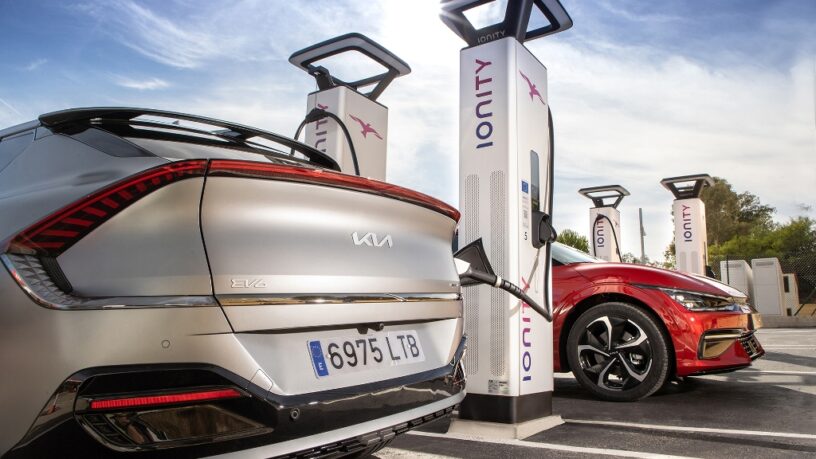Electric vehicles (EVs) have the potential to reshape the transportation sector globally, drastically cutting carbon emissions and clearing the way for significant climate progress. Despite the roaring success of EVs, adequate charging infrastructure is lagging behind. Many EV owners charge their cars at home using a wall-mounted charger. This arrangement works for most current owners because the average EV use is well within the range of today’s EVs. However, two major difficulties arise. First, for drivers who live in apartments or do not have a driveway, parking garages are rarely equipped with charging infrastructure, and installing such infrastructure may be cost-prohibitive for building managers. Second, an expanded charging infrastructure is needed for EVs to make long-distance trips that require multiple stops for charging. When it comes to longer trips, EV owners can experience “range anxiety,” the fear that the car will run out of power before reaching a suitable (and functioning) charging station. Hence, building a robust public “fuelling” network of charging stations is the key to a successful EV market. At home, followed by the workplace, remains the most favorable location for EV charging. This means that the market for public charging stations is in DC fast charging targeted at on-the-go, cross-country (long-range) driving, and in emergencies.
It is a classic chicken-versus-egg scenario. Do public charging stations help drive EV adoption, or does greater EV adoption demand a more comprehensive public charging infrastructure? In what has been equivalent to a land grab, some charging providers are competing for space at libraries, museums, parks, retailers, municipal parking garages, and anywhere else that is willing to install a station. Stakeholders need to abandon the current model of using public funds and grants to install stations. Historically, such large projects have tended to be unprofitable due to high upfront costs; electric car use will need to become more widespread before they can turn a profit. The ideal end state is a sustainable, market-driven industry. It will never reach that status unless it unlocks a real value proposition as uncovered in the new report “Charging Infrastructure for Electric Vehicles and Fleets 2022-2032” by IDTechEx.
Impacts on the grid
Managing the potential incremental energy demand that EV charging could put on the grid is crucial. Expert assessments vary on how much electricity demand will increase with widespread EV use. The US Department of Energy predicts a 38% increase in electricity consumption by 2050, mostly due to a high penetration of EVs. Smart charging technology and off-grid charging solutions, that are covered in the IDTechEx report, will become more favorable where grids do not have the available excess capacity to generate increased amounts of power with existing infrastructure.
Total charging installations to increase by 11 times from 2021 to 2032. Source: IDTechEx – “Charging Infrastructure for Electric Vehicles and Fleets 2022-2032”
The growing market for EV charging
IDTechEx believes the electric vehicle industry will not be derailed and will continue with its staggering momentum. Over the coming decade, demand for charging infrastructure will be driven by over 175 million plug-in EVs in use globally including passenger cars, buses, trucks, and vans. The benefits of the electric vehicle transition are at least an order of magnitude greater than charging infrastructure costs, making charging infrastructure a modest down payment to decarbonize the transport sector.
The latest IDTechEx report, “Charging Infrastructure for Electric Vehicles and Fleets 2022-2032” provides a comprehensive overview of various charging technologies and standards globally, including fast charging, inductive and capacitive charging, mobile charging, robotic and autonomous charging, battery swapping as well as dedicated charging for fleet EVs. An analysis of the electric vehicle charging value chain and business models of key market players is also included. See the report for detailed ten-year market forecasts on EV charging infrastructure in both unit numbers and market value (revenues); granular market forecasts by major regions (China, Europe, and USA), sectors (passenger cars and fleet EVs), applications (private and public) and power levels (AC and DC).
*Article Source www.agilitypr.co.uk








